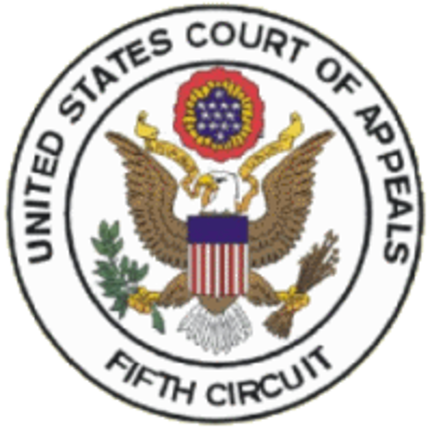The laws of preferential and fraudulent transfers under the Bankruptcy Code can often seem theoretical and formulaic. When certain boxes are checked, it appears, at first blush, that a pre-bankruptcy transfer can be avoided, regardless of any intent or surrounding circumstances.
However, in Whitlock v. Lowe (In re Curtis DeBerry), Case No. 18-50335 (5th Cir. Dec. 23, 2019), the Fifth Circuit Court of Appeals recently reminded us that circumstances do matter in imposing avoidance liability on a transferee. Specifically, joining all other courts that have looked at the issue, the Fifth Circuit held that a transferee who returned a fraudulent transfer to a debtor prepetition cannot be held liable postpetition for receiving the prepetition transfer in the first instance.
In this case, the chapter 7 trustee in the debtor’s bankruptcy sought to recover $232,000 transferred to a relative of the debtor prepetition but also returned to the debtor prepetition. There was no issue that the initial transfer of funds to the relative constituted a fraudulent transfer, as the debtor was insolvent at the time and the relative transferee provided no value in return for the initial transfer. Both the bankruptcy court and the district court found that such facts were sufficient to impose liability on the transferee. But, the Fifth Circuit disagreed.
Section 550(a) provides that “the trustee may recover, for the benefit of the estate, the property transferred” prepetition and avoidable under sections 544, 545, 547, 548, 549, 553(b) and 724(a) of the Code. The Fifth Circuit’s opinion turns on the definition of “recover,” which is defined in Black’s Law Dictionary (11th ed. 2019) as meaning “to get back or regain in full or in equivalence.” See also Webster’s New International Dictionary of the English Language 2080 (2d ed. 1941) (defining recover as “to get or obtain again; to get renewed possession of”).
According to the Fifth Circuit, obtaining a duplicate of something is not getting it back (or recovering); rather it constitutes a windfall. Thus, “[o]nce the fraudulently transferred property has been returned, the bankruptcy trustee cannot ‘recover’ it again using § 550(a).”
Bolstering the Court’s rationale is the fact that “every other court to consider the issue has agreed with [the Court’s] reading of the plain text.” Many courts reach the same result by relying on the “single satisfaction rule” found in section 550(d), which provides that “[t]he trustee is entitled to only a single satisfaction under subsection [550](a) . . . ” See, e.g., Kapila v. SunTrust Mortg., Inc. (In re Pearlman), 515 B.R. 887, 896 (Bankr. M.D. Fla. 2014). Other courts, including the Eleventh Circuit, rely on the bankruptcy court’s equitable powers to prevent a windfall. See , e.g. , Bakst v. Wetzel (In re Kingsley), 518 F.3d 874, 877-78 (11th Cir. 2008) (per curiam). Indeed, the Court could not find a single bankruptcy case that supported the trustee’s contrary position.
While the trustee primarily argued that the single satisfaction rule only applied to an actual recovery obtained postpetition under section 550(a), the Court found the argument unavailing because the term “satisfaction” in section 550(d) presupposes an obligation that has otherwise not been satisfied–whether prepetition or postpetition. Here, the obligation by the transferee had, in fact, been satisfied prepetition by the return of the transferred funds to the debtor.
The Court also dismissed the legislative history of section 550(d), cited by the trustee, as not addressing situation at hand, where an otherwise avoidable transfer has already been returned prepetition. Rather, the legislative history only addresses traditional instances where a trustee obtains an actual recovery from one transferee and later seeks a duplicate recovery from another transferee.
The trustee’s last two arguments were that (a) the prepetition return of the funds did not benefit the “estate” under section 550(a), because no “estate” existed prepetition and (b) there would be no windfall to the debtor’s estate in this case because the debtor had spent all the returned funds prior to the bankruptcy filing. The Court dismissed these arguments outright, finding, in the first instance, that there could be no “recovery” under section 550(a) if a fraudulent transfer has already been returned and, in the second instance, that even if the debtor “frittered the money away [prepetition] . . . it has nothing to do with the fraudulent transfer or [the transferee].”
Takeaway— While the Fifth Circuit’s common sense interpretation of the Code prevented an inequitable result under the circumstances, the fact that it took several appeals to correctly resolve this matter demonstrates the potential exposure to all parties that undertake transactions with an insolvent debtor prepetition, given the ambiguities in the Code with respect to avoidable transfers. Thus, if a party does receive one or more transfers from a debtor prepetition, it should not be surprised if those transfers are later labelled as being avoidable. In the end, the Fifth Circuit only clarified one situation where a prepetition transfer cannot later be recoverable.

